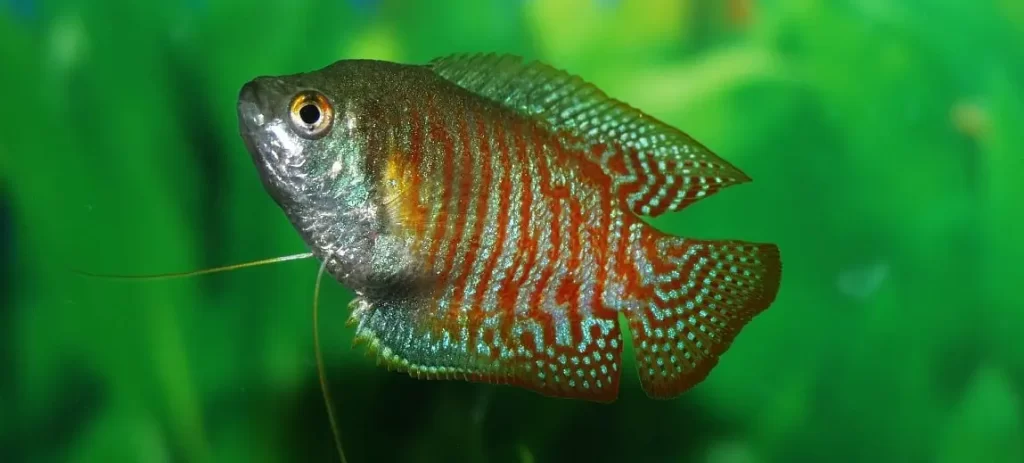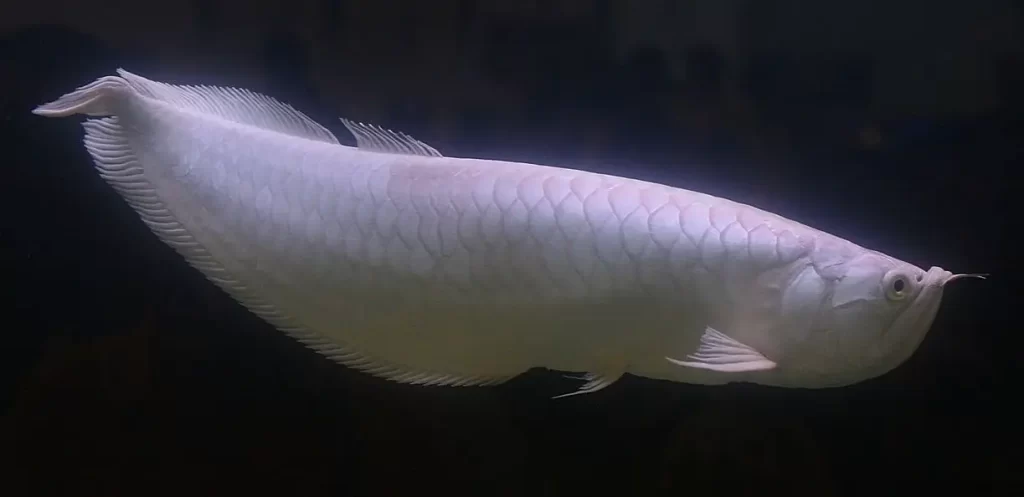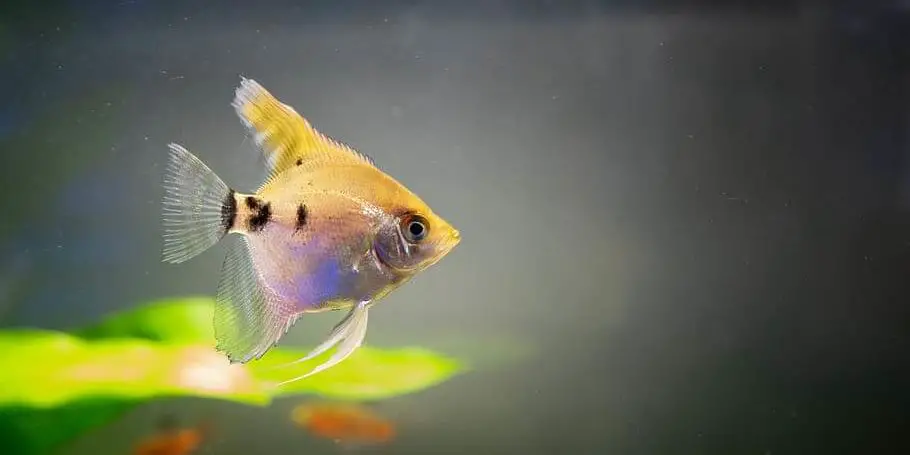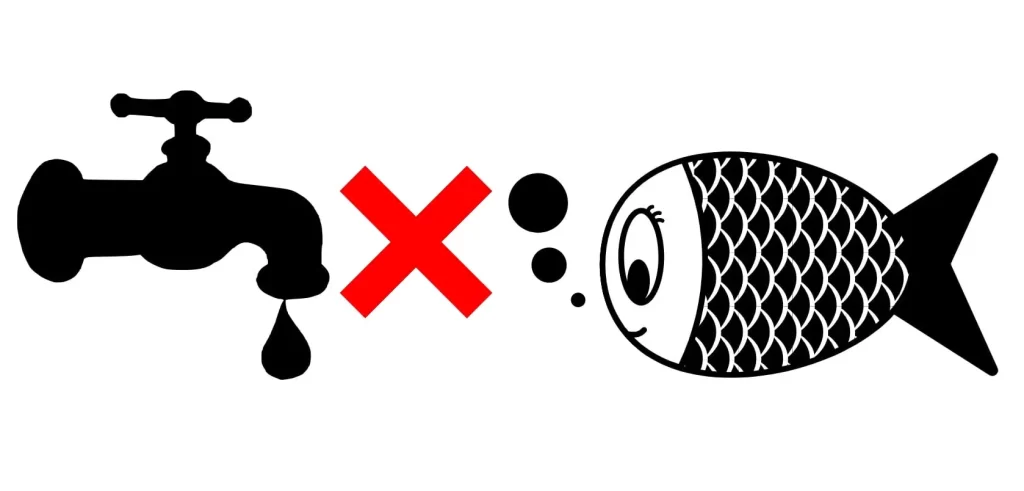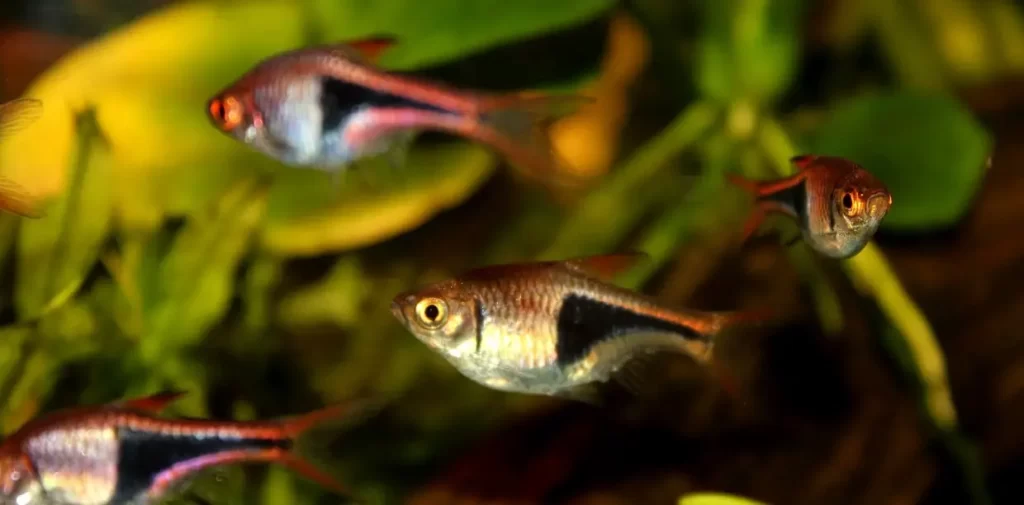Fishkeeping is quite a popular hobby nowadays. It is sophisticating, convenient, and appealing to many people in recent times. Besides this, thanks to the internet and all, you can get the information and buy different fish online. Normally, there are millions of fish out there. But luckily, today, we will be discussing the one that is my favorite- Gourami Fishes. I was very fascinated by the colorful appearance of this fish and bought it in a hustle. Unfortunately, this is where I made a mistake because Gourami fish might suffer from some diseases and needs proper care and treatments.
The common diseases that most aquarists find in their Gourami fish are fin and tail rot, dropsy, popeye, columnaris, fungal infection, pseudomonasis, and aeromonosis. Usually, these diseases result from polluted water, unhealthy food, bacteria, or viruses. So, treating these diseases in Gourami fish is not so complex. You just need to maintain a clean environment for this fish with optimum water conditions and a healthy diet.
I have raised and bred Gourami Fish for more than ten years. Unfortunately, within those years, my Gouramis got infected by many diseases. At first, I didn’t know what to do and the nature of the disease, but with a lot of research, I can now identify, treat, and prevent many Gourami Fish diseases. In this article, I will share with you my knowledge experience based on my ten years of experience in Gourami Fish Disease; it’s the cause, treatment, and prevention.
How Do Gourami Fish Suffer From Diseases?
Gouramis are a group of freshwater anabantiformes fishes that include the family Osphronemidae. The fish are originally from Asia. You might be surprised to know that these fish have a lung-like labyrinth organ (similar to labyrinth fish). This organ allows them to gulp air and utilize air oxygen. Generally, this organ is an indispensable development for fish that often inhabit warm, shallow, oxygen-poor water. So, any infection in this organ is quite common in fishes like Gourami and thus results in diseases.
Being a freshwater fish, change in water condition and pollution is the main reason for diseases in Gourami fish. In addition to this bacterial and parasitic contamination, illness because of pH unevenness of water, diseases emerging from unhygienic conditions or aquatic contamination, unhealthy diet, and lack of proper space and oxygen supply also lead to various health issues of this fish.
Therefore, you must always monitor the water parameters, change the water regularly, and include fresh live plants in your Gourami tank. Furthermore, the food you feed is also very important for their health and well-being. Thus, always giving your fish healthy and nutritious food is crucial.
How To Check If Your Gourami Fish Is Sick?
Determining whether your fish is healthy or not isn’t a complex problem at all. If you are a careful observer, then you can easily tell that your fish are sick before they start dying.
Moreover, there are certain activities that a sick most often show. If you notice this behavior in your Gourami fish, it might be due to diseases. Now, talking about the signs of sick fish, they can be any or all of these:
- loss in appetite
- reduced movement or inactivity
- fading of Gourami skin color; they might appear dull
- hanging lethargically in low water
- gulping at the surface or rubbing against something.
- frequently swimming toward the surface of the tank
- trying to jump out of the tank
These symptoms indicate that the fish are not feeling well. Therefore, I suggest you immediately consult your Vet if you see any of these symptoms in your Gourami fish.
Moreover, even though your fish might not show any of these signs now. There are higher chances that your fish might suffer from illness in the future. So, it is very important to know some preventive measures. Don’t you think so?
How To Prevent Diseases In Gourami Fish?
Freshwater fishes like Gourami often suffer from various types of diseases. A slight change in their environment and water condition can greatly affect these fishes. Furthermore, once fish gets sick, it can be difficult for them to recover. So, prevention is always better than cure.
But how can you prevent your Gourami fish from diseases? Is it possible to keep them healthy forever?
Well! No one can guarantee the forever good health of Gourami fish, and I am no exception. But, I can assure you that if you follow the following tips, your fish will live a better and healthier life:
- Regular water change
- Monitoring the parameters of water and correcting if fluctuation occurs
- Using filters and air pumps
- Placing some live plants and substrates to give a more natural feel to the tank
- Providing enough space for your Gourami fish
- Always providing nutritious food in the right quantity
- Cleaning the tank water regularly
In short, poor water quality, nutrition, and sanitation are the base of preventing fish diseases. They result in various diseases in your fish that need immediate treatment. However, like the causes, there are several diseases that your Gourami fish might suffer from. And all these diseases need specific treatment, which we will discuss further!
Common Gourami Fish Diseases and Treatments
Keeping a Gourami fish is undoubtedly fun. Still, you need to bear some responsibility for the fish if you want them to live a healthy life. Since Gourami is freshwater fish, you might find your fish suffering from various health issues. In addition, the fish might get some common diseases: Fin and Tail Rot, Dropsy, Pop Eye, Ich, Hole in the Head, etc.
A simple and basic solution to these diseases is maintaining a favorable environment, changing 10% of the water every week, and examining the water conditions using water test kits. Here is the list of some of the most common Gourami Fish Diseases and Treatments.
Fin and Tail Rot
Who would want to see their beautiful fish experiencing pain and fading color? Unfortunately, fin rot is one of the most common diseases in freshwater fishes. It usually causes discoloration and ragging of your Gourami’s fin. The major cause of fin and Tail rot is a bacterial infection.
As mentioned earlier, Fin and Tail Rot affect many freshwater fish species, but the most common one is Blue Gouramis. For fish with this disease, their fin and tail start decaying, as its name suggests. The main cause of this disease is the unhygienic water environment.
Symptoms
The symptoms of fin and tail rot in Gourami fish are very distinct. Such as:
- Inflamed patches on the fins
- The fin’s edges will have faded color or discoloration, and the fin will start fraying.
- stops eating and inactiveness
- Ragged tail and fins
Cause
Usually, fin and tail rot in Gourami results due to the following causes:
- Poor water quality or contaminated environment
- Overgrowth of bacteria, different types of gram-negative bacteria, including Aeromonas, pseudomonas, and vibrio
- Overfeeding
- Incompatibility between fishes
Treatment
The first step you need to take to treat your sick fish is cleaning your water tank and improving water quality. Improving water quality includes a water change and examining the fish tank. Next, you can add fish antibiotics to the water. Adding aquarium salt to the water will also help soothe the fish, treat the infection, and prevent infections.
Dropsy
Dropsy is the swelling of soft tissues due to the accumulation of excess water. Actually, it is not a disease but an internal bacterial infection that causes the bodies of fish to swell. I know it might be shocking and depressing to hear this, but successful treatment of dropsy is not sure unless you diagnose the infection early.
Symptoms
Now! what about the signs? Here are some symptoms of dropsy in your Gourami fish:
- Swelling belly
- Bulgy eyes
- Curves spine
- Loss of appetite
- Hanging lethargically in low water
- Red and swollen anus
- Pale gills
Cause
The causes of different diseases in fish do not vary much. They are almost the same. Like:
- Overgrowth of bacteria called Aeromonas, which you can usually find in almost every aquarium.
- Unhealthy diet
- Uneven change in water temperature
- Poor water quality
Treatment
Dropsy is not that simple infection that you can cure easily. The first step of treating infected fish is moving to a separate tank or hospital tank. It is very important to move sick fish to a separate tank to save other remaining healthy fishes. The second step is to add one teaspoon of salt to each gallon of water in the hospital tank. Finally, feed your fish antibiotics with good quality food and water.
Pop Eye
Pop Eye is a condition where the eye of the fish is swollen and distends unusually from its joins because of different diseases. This issue can influence only a single eye or both the two eyes of fish. As a result, eyes may seem cloudy or even clear now and again, other than the undeniable swelling.
Fish suffering from the popeye will often be stressed or diseased in many ways, so the popeye itself doesn’t kill a fish, but affected fish die from other diseases. Hence, it is very important to detect this disease in time. But the question is how to know whether your Gourami is suffering from the popeye or not?
Symptoms
If you are struggling with the answer to the above question, look below to get your answer. Here are the signs that pop-eyed fish usually shows:
- Single or both eyes of fish will be bulgy
- White or cloudy eyes outer surface of fish
- Less active and less appetite
- the appearance of bubbles under the fish’s skin
Cause
Now! Let’s come to the causes of the popeye.
- General causes are bacterial infections, injury, and poor water quality
- The excess level of gas in water
- If only one eye of the fish is infected, then it is an injury, not any disease or problem with water.
Treatment
Treatment for the Popeye depends on the situation. If only one eye is swollen, then it is not a disease; rather, it is the injury that occurs when fishes are involved in fights with other fishes. If it’s an injury, treat your injured fish properly with aquarium salt. But if you think fish is suffering from an infection, you should shift your sick fish to a quarantine tank to prevent infecting other healthy fishes. If Epsom salt is used at a dose of 1 to 3 teaspoons per 5 gallons of water, it will reduce swelling. Unfortunately, it is difficult to treat fish with popeye. Antibiotics or other medicines used for fin rot can be very useful.
Columnaris
Columnaris is a bacterial infection. This bacteria can affect your fish both internally and externally. Especially in freshwater fishes, columnaris are quite common.
Symptoms
Some of the peculiar symptoms that Gourami suffering from columnaris shows are:
- Grayish white spots on some parts of the fish head
- Reddish tinge usually on the head, fins, gills, or body
- Fish tend to have a bruise on their bellies and sides
- fins will start deteriorating, and sores may appear on their body
- loss of appetite and less active
Cause
Although bacteria are the causative agent of columnaris in Gourami, other assisting factors to this disease are:
- If fish are stressed due to many reasons like poor water quality, improper diet, etc
- The infection is profoundly infectious and might be spread through contaminated nets, specimen containers, and even nourishment.
- Poor water quality
- Sudden change in environment and temperature
- Crowded and incompatibility with other fishes
Treatment
In the first place, gradually bring down the temperature in the tank to 75°F to slow the course of the infection. Since, Columnaris flourishes in low oxygen conditions, expanding an air stone or bringing down the water level to make more sprinkles from the channel will help. The most effective treatment for Columnaris is giving medicated food containing Oxytetracycline. If fish is not eating by the time symptoms are noticed, antibiotics in the water would be the next treatment option.
Fungal Infection
Fungal infections are one of the most widely recognized diseases for fish. Its spores normally populate fish tanks, which can cause risky increments of sick, stressed, or injured fishes. These diseases show a white cotton-wool-like development on the skin, mouth, fins, or gills. This condition is regularly an additional issue, requiring a two-section treatment.
Symptoms
Some of the symptoms of fungal infection are:
- Bulgy eyes
- light gray, cottony growths on the skin, fins, gills, and eyes
- fish swims in abnormal circular movements
- pale color
- loss of appetite
Causes
Do you know what causes fungus in your fish? If not, you will know them now.
- stressed fishes due to an unclean environment
- if fish contains dead and decaying organic matter
- Crowded and incompatibility with other fishes
Treatments
Like in another fish disease, separate infected ones from healthy fishes. Put your sick fish in a quarantine tank and give it a salt bath. You can add one tablespoon of aquarium salt per gallon of water to the quarantine tank. Then add your sick fish to salty water for 10 to 15 minutes. You can continue this process for a few weeks and ensure the infection is gone completely. You should always clean your quarantine tank each day or a maximum of 2 days.
Velvet
Velvet is a common fish disease, also known as rust. This disease can finish all the fish in your tank. It is caused by a species called Oodinium, which will attach itself to your fish’s skins and gills. This disease is the one that startled me a lot when my fish suffered from it for the first time.
As I wasn’t much aware of Velvet disease, I was very scared. However, after I consulted with the vet and learned about it, I can now discuss everything with you.
Symptoms
First, in our discussion, let us start with the symptoms of velvet disease in Gourami fish:
- Fine yellow or light darker film on the skin
- In the last stage, the skin will peel off
- Clamped fins
- Lethargic behavior
- Loss of appetite
- Scratching against hard objects
Causes
Now! how about going through the causes:
- The main cause of velvet disease in species called Oodnium
- Unhygienic water tanks or poorly maintained aquariums
- Sudden change in water temperature
- Not changing the water frequently
Treatment
Talking about the treatment! Velvet is a highly contagious disease. It is almost impossible to cure this disease, so you should take action early. For example, dim your aquarium lights or leave your tank in total darkness.
Fish Lice
Fish with the disease will have the biggest parasites ranging from 5 to 10 meters long around their fins and head. These parasites will attach themselves to your fish using their spines, suckers, and hooks, causing intense fish irritation.
Symptoms
I usually resonate fish lice with dandruff of humans. I know it’s a silly thing to do the show. But it does give a clear indication of what fish lice look like. Nevertheless, some of the common symptoms of fish lice are:
- Small dark spots in your fish
- Red marking and ulcers
- Restless and inactive
- Scratching against hard objects to remove lice
Causes
The causes of fish lice do not differ much from parasitic infections. It results basically due to:
- Sudden change in a water environment
- The disease is highly contagious and travels from fish to fish
- Transferring outdoor fish to an indoor aquarium
Treatments
Organophosphates tend to be an effective cure. The most common method is holding your fish in damp clothes, removing the parasite using tweezers, and cleaning the wound with antiseptics.
Hole In The Head
Hole in the head disease is a genuinely general ailment of freshwater fish that principally influences cichlids, plate, and Oscars. Another familiar name for this illness is Freshwater Head and Lateral Line Erosion (FHLLE). Besides Gourami, you can even notice this issue in other freshwater fishes.
Symptoms
A hole in the head is a very specific disease in fish. You can determine these health issues without any problem. However, some symptoms that this health hazard follows are:
- pitting-type lesions on the head and lateral line
- if not treated early, the holes will become larger
- bacterial and fungal infections will develop
- Loss of appetite
- Lethargic behavior
Causes
After getting a thorough idea of the hole in the head disease symptoms, getting familiar with the causes is time. And they are:
- Experts still haven’t determined the exact cause of this disease, but the common cause can be the flagellate parasite Hexamitavitamin imbalance helps to develop this disease
- Poor water quality
- Improper nutrition
- Overcrowding
Treatments
When you remove all activated carbon, it is possible to improve infected fish and perform water change in a large percentage. You should improve your fish diet and nutrition. You should add antibiotic metronidazole to your quarantine tank. And you must watch Water quality and adjust the environment to the exact standards required for the fish.
Everything I have included here is based on my observation and years of experience. Every fish acts differently when unwell, so all fish doesn’t necessarily show the same symptoms. However, I can assure you that your Gourami show signs when they are sick might not vary much from all of these.
Diseased fish are very complex and daunting to manage. Especially, watching your fish lose its essence and suffer can be a traumatizing experience for aquarists. So, here is what I usually prefer to prevent diseases in my Gourami fish.
Most Effective Measures For Diseases Prevention In Gourami Fish
It is hard to recognize the presence of ailment in its initial phase on account of the gregarious nature of fish in water, which causes troubles in perception, analysis, and opportune treatment.
Aside from this, some viable medications and measures to cure certain fish infections are yet not known well. Consequently, you must take flawless preventive measures since this is a key connection in fish disease control.
Effective measures to prevent gourami fish from diseases
- Clean your water tank thoroughly
- Proper and nutritional feeding
- Prevent your fish from injury
- Check the compatibility of fish with other fish in your tank
Compatibility Of Gourami Fish
When I thought of keeping other fishes in the tank, I researched a lot about the compatibility of Gourami fish. According to my research and reviews of some aquarists, I conclude.
In general, Gouramis are peaceful fish. However, they are still capable of harassing and killing smaller fishes. Overcrowding in your fish tank is the main reason that can also cause aggression among fish. However, when I asked around with a few of my fellow friends, they told me that they had housed Gouramiswith numerous species, for example, danios, mollies, silver dollars, Neon tetras, and plecostomus catfish. And, to this date, there isn’t much of a problem.
Usually, compatibility relies upon the types of gourami and the fish it is housed with. A few species (for example, Macropodus or Belontia) are profoundly forceful and may bug or slaughter littler or less forceful fish. In contrast, others (Parosphromenus and Sphaerichthys, for example) are modest or have specific water needs and, in this way, will be outcompeted by typical fish.
Conclusion
In brief, Gourami Fish are usually known as peaceful fishes among all fishes. It is not difficult to take care of fish in the aquarium if you are a good observer who takes good care of fish. But if you are a beginner, then you should work very hard. You should always maintain your aquarium clean and provide your fish nutritional and good quality diet with necessary protein. Furthermore, you have to observe your fishes’ behavior and notice their abnormal behavior. I hope I have made it clear about Gourami Fish Diseases and Treatments.
However, if you still have any queries that you want to ask me, leave a message in the comment section below. Thank you.
Reference
Image Credit: https://pixabay.com/photos/fish-gourami-tank-underwater-173431/

